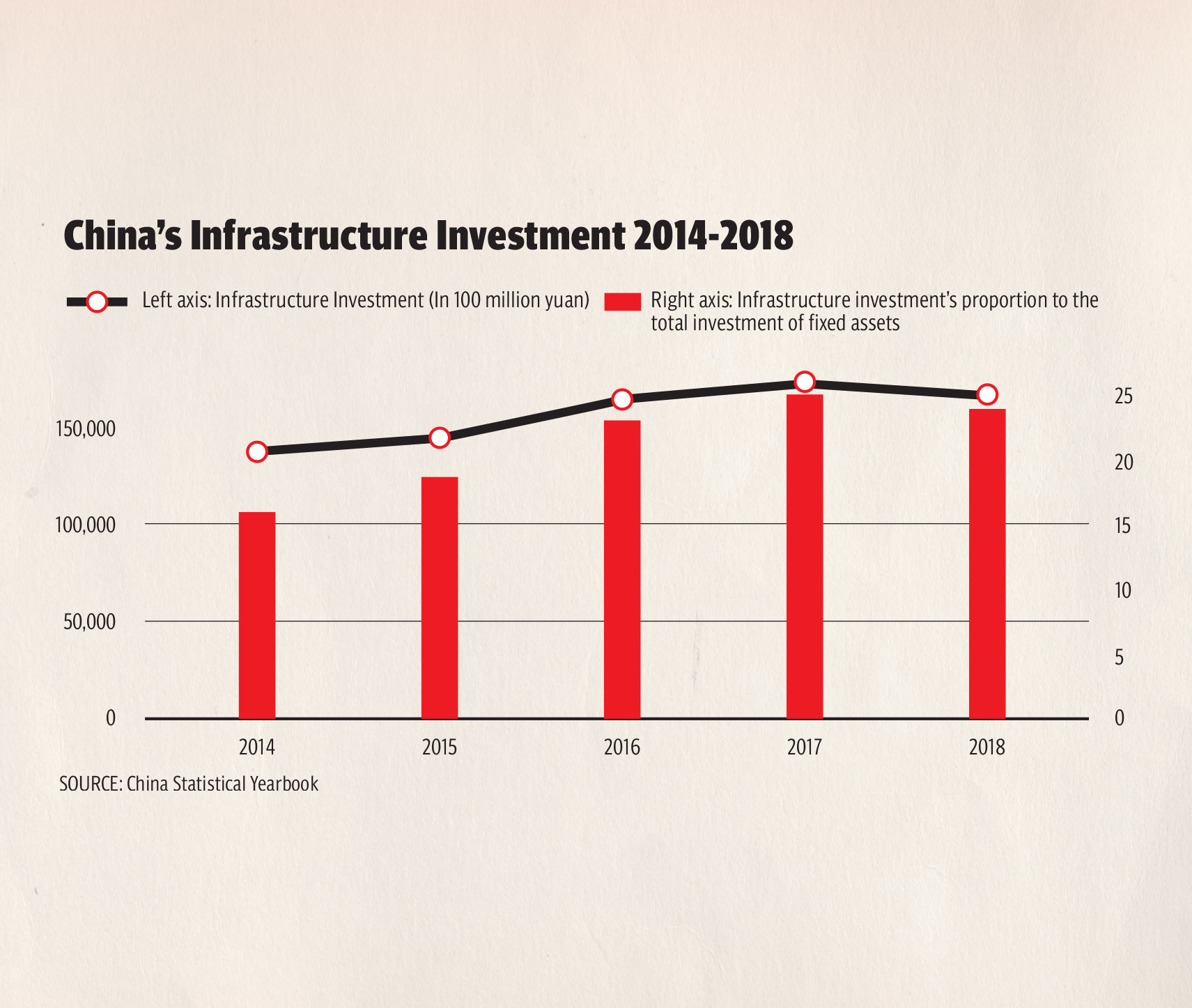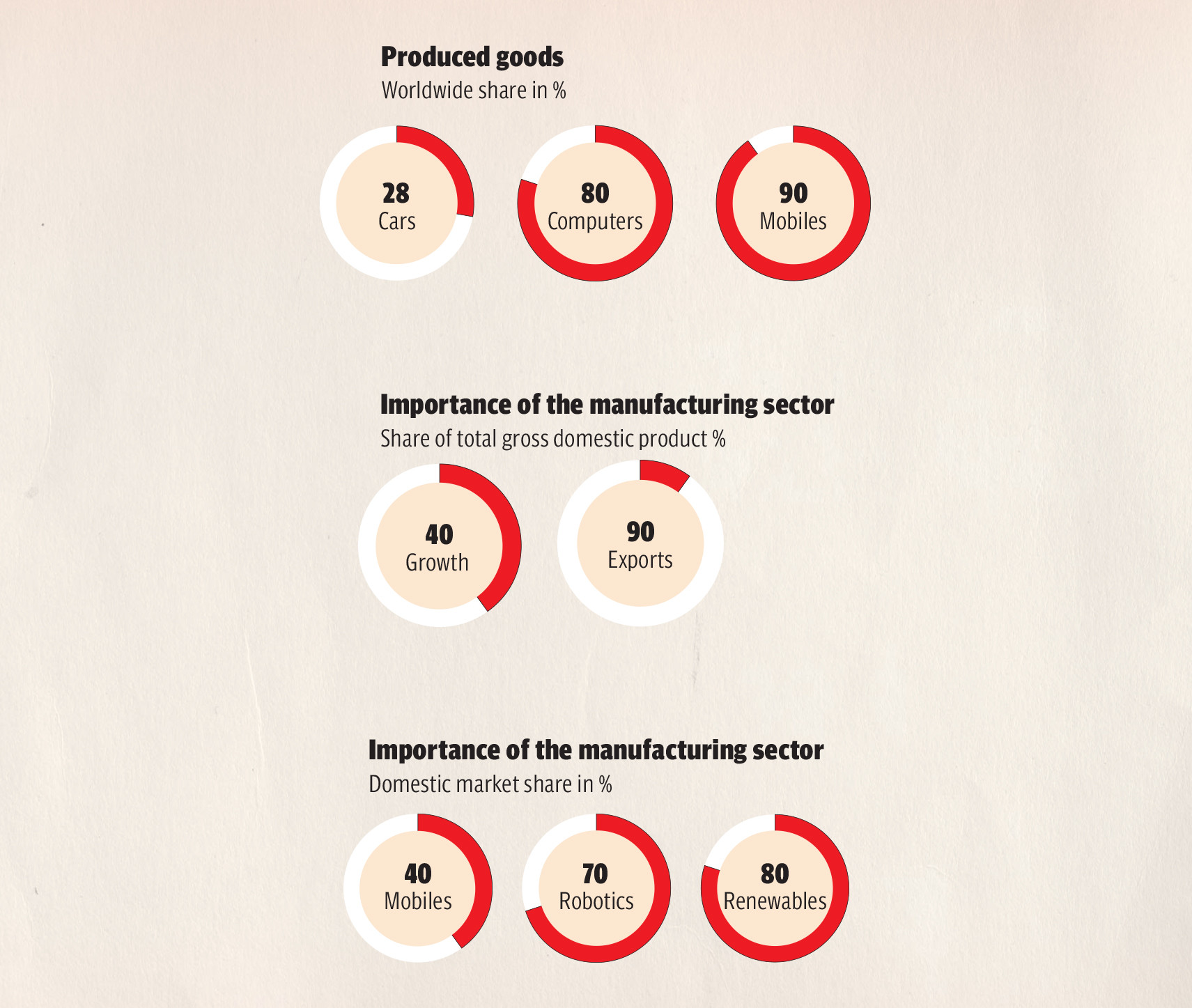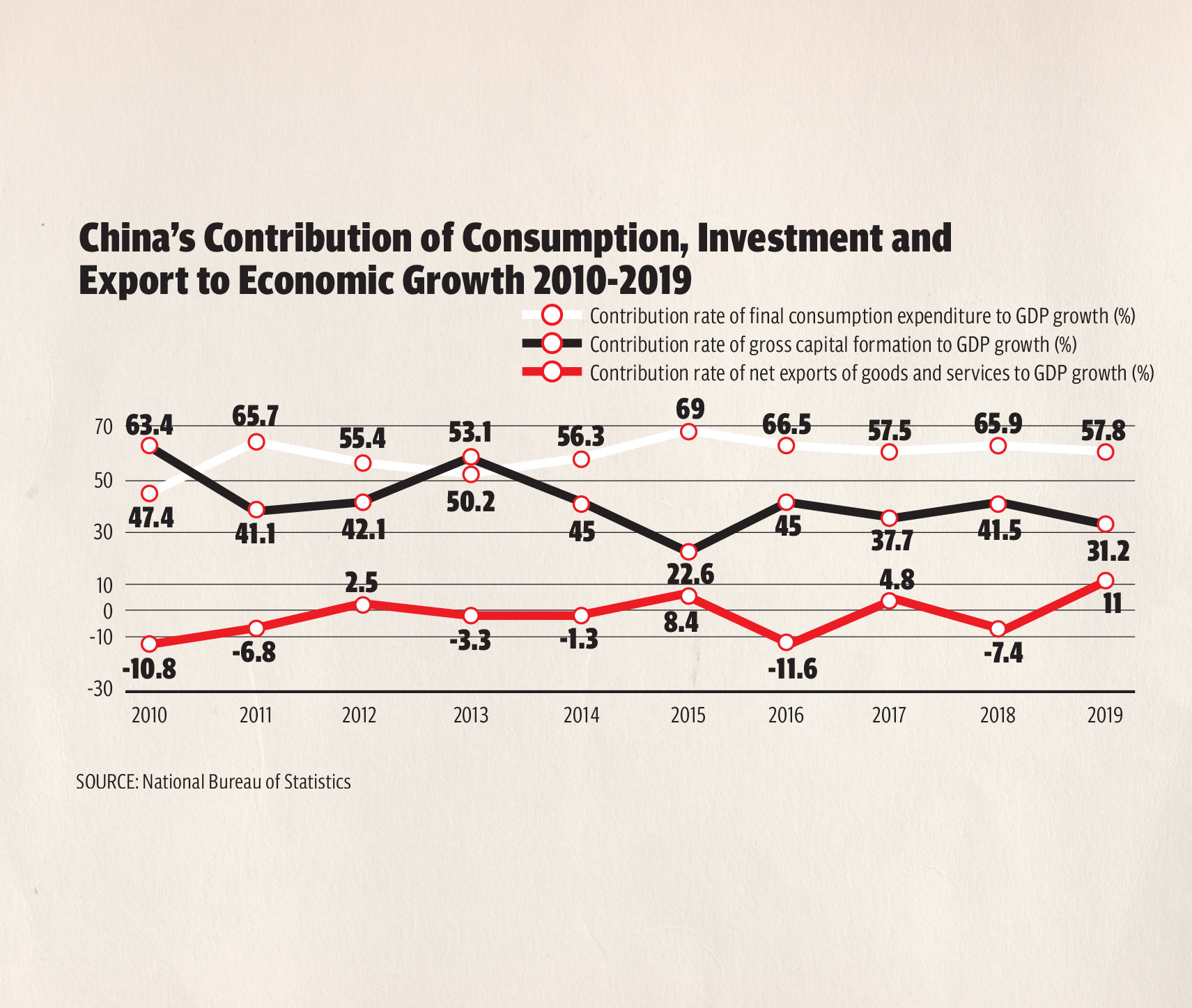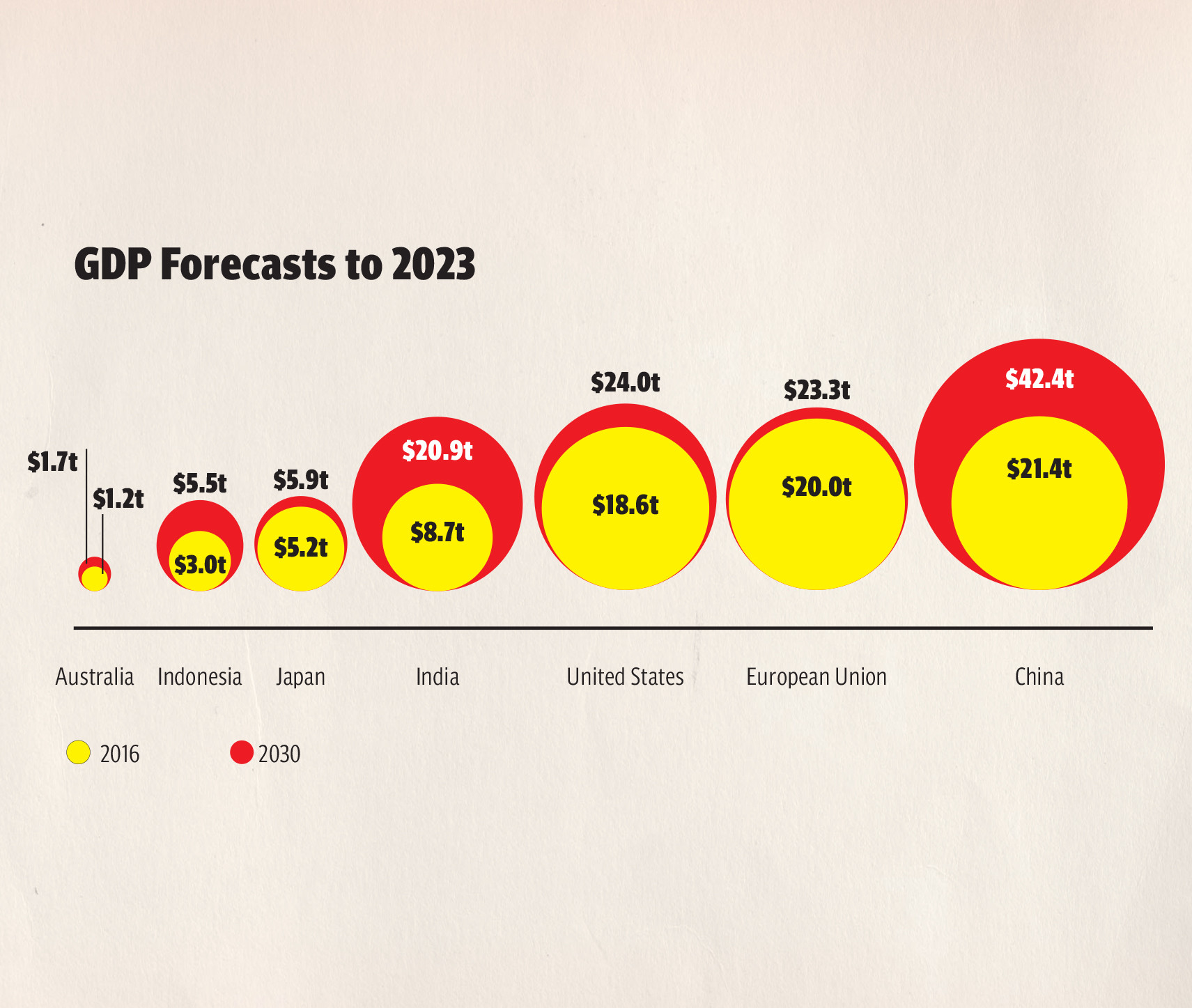“With thousands of mountains already behind, the road ahead is full of promises of a budding spring,” reads a Chinese adage. China’s leap-frogged modernisation over the past 100 years has been unprecedented in human history. China’s dazzling metamorphosis from a dirt-poor nation into the world’s second largest economy, top trader in goods, biggest holder of foreign exchange reserves and biggest manufacturer has proved that nations can modernise and prosper without conquering and colonising weaker countries and exploiting their resources. The World Bank has admitted that the Chinese government has lifted over 800 million people out of poverty, and expanded the middle-income group to over 400 million people over the past 40 years. This is because long-term social stability and rapid economic growth are integral to China’s path to modernisation as it believes “modernisation should not make the rich richer and the poor poorer. Nor should it serve the interests of only a few.”
“We have put in place the world’s largest compulsory education system, social security system, and medical and health system. China has realised, in a short span of several decades, industrialisation that had taken developed countries several centuries. We have caught up with the times in great strides,” said State Councilor and Foreign Minister Qin Gang while speaking at the opening ceremony of The Lanting Forum on Chinese Modernisation and the World, in Shanghai on April 21, 2023.
 Design by: Mohsin Alam
Design by: Mohsin Alam
But unlike the West, China doesn’t believe in conquering and colonising and imposing an “imperialist culture” on its colonies in its quest for modernisation. Instead, it says it is willing to share the opportunities to promote diverse ways of modernisation and create a brighter future for the whole planet because as President Xi Jingping said, “China’s own future is closely connected with that of other countries and peoples, [therefore] we will strive to provide new opportunities for world development, add new impetus to humanity’s exploration of paths towards modernisation and make new contributions to the theory and practice of humanity’s modernisation as we make new progress in Chinese modernisation.”
Senator Mushahid Hussain Sayed says China’s path to modernisation is rooted in its unique history of not just being a country but a civilisation of 5,000 of years of continuity. “In this context, China’s ‘strategic culture’ has some key components that are the foundation of China’s modernisation. These include the Silk Road, which was about commerce, culture and connectivity amongst countries and continents. Then, the Great Wall, built over centuries, was a protective and defensive mechanism indicative of China’s worldview where China was fearful of external aggression. This explains the peaceful nature of China’s path of modernisation.
“The Long March, which helped save the Chinese revolution, demonstrates how patience, persistence and perseverance are key elements of China’s strategic culture and reflecting the spirit of ‘never give up’. Finally, the ‘Century of Humiliation’ from 1840-1949 when Chinese sovereignty was trampled upon and China was a disparate country dominated by fiefdoms and warlords.”
Credit for China’s modernisation
The credit for China’s unprecedented modernisation certainly belongs to the Communist Party of China (CPC) which liberated the Chinese people from the yoke of bondage, backwardness and feudalism. In this regard, four leaders certainly rank among the icons of the CPC whose role was indispensable in the path to modernisation of China. Chairman Mao who announced the formation of the People's Republic of China in 1949 when he proclaimed that the “Chinese nation has stood up” and under whose leadership, an enabling environment was provided for a modern way of life for the Chinese people with education, healthcare and basic access to housing and food. Then, Premier Zhou Enlai who spearheaded Chinese diplomacy and interaction with the outside world by enunciating the Five Principles of Peaceful Coexistence in 1954, which later became the bedrock of contemporary international relations. Third, Deng Xiaoping who launched the Reform and Opening-up policy that transformed China by uplifting 800 million people out of poverty within two generations. Finally, President Xi Jinping has made China rich, strong and a global leader on such issues as globalisation, economy and climate change.
Sharing his views on China’s development in a such a spectacular manner, defence and international relations expert Maj-Gen (retd) Inam Ul Haque highlighted two reasons. “Number one: the hold of the Communist Party is very certain, expansive and very effective,” he said. Allaying any negative connotations to term, he was quick to point out that this hold was not because the party is a ‘reprehensive organisation. Rather, the Party is a very effective governing organisation that has accurately delivered its promises through successive five-year plans, he explained. Sharing an example, Gen Inam recalled China’s first five-year plan that envisaged the country achieving self-sufficiency in food. “After it was executed, China was not just self-sufficient but exporting food to the rest of the world,” he said.
The second reason behind China’s dramatic modernisation is political homogeneity, according to Gen Inam. “This homogeneity is maintained under Confucian values and influences, and is the main cause for the betterment and development of the country,” he added.
 Design by: Mohsin Alam
Design by: Mohsin Alam
Chinese modernisation model
Modernisation is not exclusive to one country, one region, or one political philosophy or one economic model. Modernisation is an inalienable right of every country, not an exclusive privilege reserved for a particular region, nation or race. The West undoubtedly achieved modernisation ahead of others, but it does not end here, nor does it mean a one size fits all formula should be followed mechanically. Copycatting foreign modernisation models while ignoring local conditions and needs could lead to catastrophic consequences. Any country can develop a development model to achieve modernisation as per local conditions and the needs of its people. China has done exactly the same by creating a new form of human advancement.
Senator Mushahid says there is a qualitative difference between the Chinese and Western models of modernisation. “The Western model was built on twin pillars of hegemony and domination through occupation, aggression, conquest and colonisation on the one hand, and cultural imperialism on the other, where ‘Orientalism’ and enslavement of ‘backward’ and ‘inferior peoples’ was an integral part of that process,” he says. “China’s path to modernisation derives its content from key components of Chinese civilisation, including economy, politics, culture, society and ecology.”
Elaborating further, Senator Hussain says three key differences are apparent in the primary focus of the Chinese versus the Western models of modernisation: (a) Chinese humility versus Western arrogance and hegemony. (b) Western approach of ‘divide and rule’ versus Chinese approach of ‘unite and prosper’. (c) Western deployment of ‘hard power’ (military means and use of force to subjugate/control peoples) versus Chinese projection of ‘soft power’ (commerce, cuisine and culture).
Gen Inam shared Senator Hussain’s impression of China’s modernisation model as a more effective and humanistic alternative to the one espoused by the West. “They say that the focus is on harmonious product. The entire official communication system of China urges that the focus should be on a more harmonious society, at home and abroad,” he noted.
According to him, this focus on harmony was a direct manifestation of the teachings of Confucius and other great Chinese thinkers. “Even Laozi and Zhuang Zhou have stressed that differences create rifts and cause enmity. Perhaps, these are the things that make the Chinese model unique and place it in contrast to the other model, characterised by naked competition.” For Asian nations in particular, Gen Inam believed China’s model was more viable and appealing due to its cultural influences and economic vision that looks beyond aggressive competition.
 Design by: Mohsin Alam
Design by: Mohsin Alam
What Chinese modernisation offers to world?
Foreign Minister Qin beautifully summed this up in his speech at The Lanting Forum. “We will work with all countries to build an open, inclusive, clean and beautiful world of lasting peace, universal security and common prosperity, and develop a community with a shared future for mankind,” he said. China is the second largest economy, biggest exporter and second biggest importer of goods in the world. It is main trading partner of over 140 countries and regions, making $320 million direct investment around the world each day and attracting over 3,000 foreign businesses every month. Over the past decade, China has contributed more to global growth than all the G7 countries combined.
The Chinese modernisation model is manifested in President Xi Jinping’s various initiatives like the Belt & Road Initiative (BRI), Global Development Initiative (GDI), Global Security Initiative (GSI) and Global Civilisation Initiative (GCI) which are meant for pursuing common development and prosperity.
Since the start of the BRI, over 3,000 massive infrastructure projects have been launched, involving close to $1 trillion of investment, creating 420,000 jobs for participating countries and realising their dreams of railways, big bridges, and poverty alleviation. The GDI is also widely welcomed by the international community. With the support of over 100 countries and many international organisations, and with some 70 countries in the Group of Friends of the GDI, the Initiative is giving a strong boost to the early attainment of the UN Sustainable Development Goals for 2030. Similarly, China has contributed 63 per cent of the total debt payments suspended while implementing the G20’s Debt Service Suspension Initiative.
“All these initiatives have certain commonality in that they are inclusive, focusing on people-centric development, with a win-win proposition and not directed against any third country or party. It is more a vision of shared prosperity and shared security where security and development are indivisible,” says Senator Hussain.
“In this vision, an important component is that it is neither a focus on military nor security means by use of force to achieve modernisation, and this has been an essentially peaceful process, unlike the violence and destabilisation that have been key ingredients of the Western path to modernisation, especially when it comes to their ‘civilising mission’ in parts of Asia and Africa which they colonised,” he adds.
For Gen Inam, China’s modernisation goes beyond the world’s industrial and capitalist needs, and could shape a different, more beneficial world order. “China may be the world’s workshop now, but in due course, the country could offer an alternative to the World Bank and the International Monetary Fund, both of which have an approach based in exploitation,” he said.
A Chinese alternative to WB and IMF was not just desired by many nations; “It’s a demographic necessity in this part of the world,” Gen Inam observed. “China’s model, as I’ve mentioned, envisions a harmonious world. Take the Belt & Road Initiative and its pilot project, the China Pakistan Economic Corridor… the whole situation looks like win-win,” Gen Inam noted. “China provided loans to Pakistan on better conditions and frequently rolls them over or relaxes their conditions in view of our economic situation... this is not the case with the Western capitalist model,” he added.
 Design by: Mohsin Alam
Design by: Mohsin Alam
Western policy vis-à-vis China’s modernisation
Both Senator Hussain and Gen Inam agreed that Western policy towards China’s modernisation is based on a Cold War logic with a zero-sum-game mentality that sees China as a threat which needs ‘containment’ Soviet-style.
“I don’t think there’s any ambiguity. When I did a course 25 years ago in a Western country, their enemy was Communist China. Even today, if you read the New York Times or Washington Post, not a day goes by without an op-ed or article against China,” Gen Inam said. “Very few voices believe in cooperation between the two superpowers rather than competition… and they don’t sell. This is a very dangerous situation.”
For Senator Hussain, the fact that China is the first non-Western, non-White power to challenge Western hegemony has been difficult to digest by a West long used to ‘unchallenged dominance’. But that era, the senator believes, is now over as the ‘American Century’ gives way to the ‘Asian Century’. “China’s quest for modernisation is, therefore, embarked on the right side of history!”
